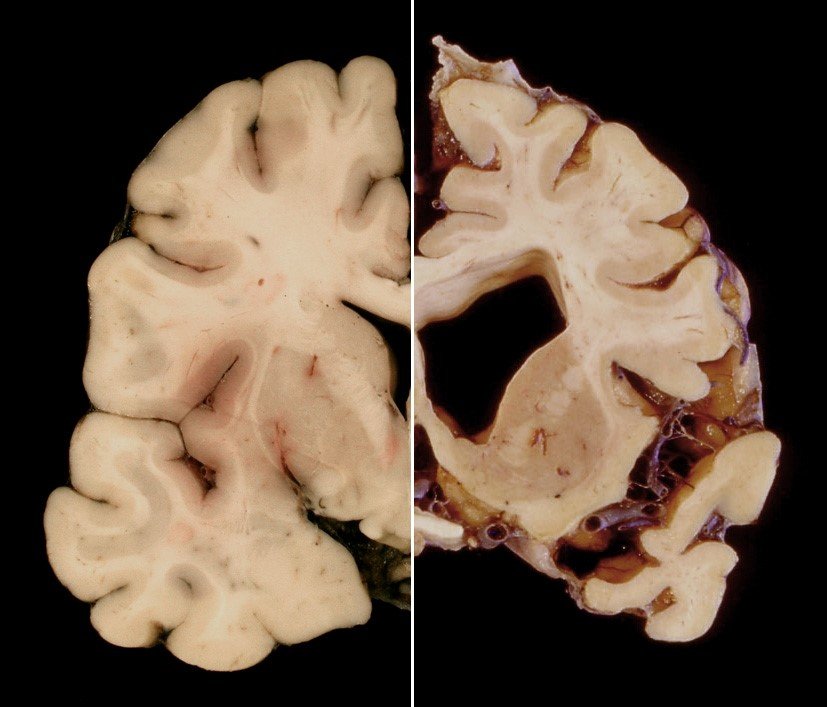Alzheimer's disease (AD)
Key Alzheimer's Facts
- Alzheimer's is the most common type of dementia. It accounts for around 60-70% of cases of dementia.
- Alzheimer's is a progressive disorder which means that the symptoms develop gradually and become more severe over time.
- The first signs of Alzheimer's disease are minor memory problems, but this develops to further symptoms such as severe memory problems, confusion, disorientation, personality changes and problems with language and speech. This may include not using the right words in sentences.
- Most Alzheimer's symptoms first appear later in life.
- Alzheimer’s disease is named after the pathologist Alois Alzheimer’s. He identified an "unusual disease" which had affected one of his patients, who had symptoms such as memory loss and disorientation. When he looked at the brain of the patient following their death, he found various abnormalities.
What happens in the brain?
- Alzheimer's is biologically characterized by two substances known as beta-amyloid plaques and tau-containing neurofibrillary tangles.
- These plaques are like sticky clumps that form between brain cells. These get in the way of the brain cells communicating with one another and therefore leading to loss of connections and cell death.
- Tau proteins are like ropes within the cell which help move molecules around, in Alzheimer's these get tangled. This leads to important molecules not moving around in the cell, causing the cell to die.
Macroscopic brain changes in a patient with Alzheimer's

Alzheimer's Dementia Overview
BRACE funds vital research into Alzheimer's disease.
If you'd like to donate and support our important work - click here.
Brain photo by Professor Seth Love
Share this page




